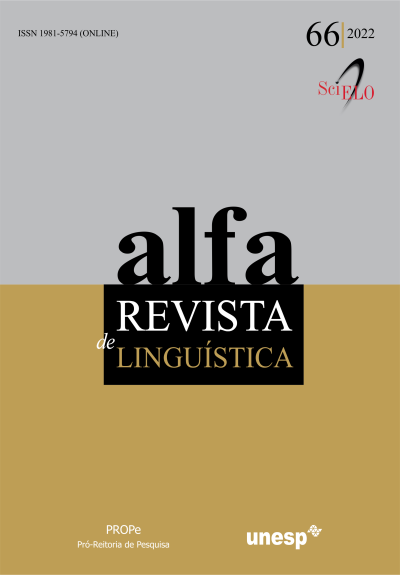O tecnodiscurso de divulgação científica
relações retóricas e deslinearização em hiperligações de notícias digitais|
DOI:
https://doi.org/10.1590/1981-5794-e14231Palavras-chave:
discurso digital, tecnodiscursividade, hipertexto, hiperligações, deslinearização, relações retóricas, notícia digital de divulgação científicaResumo
Este trabalho tem por objetivo analisar o comportamento retórico-discursivo de hiperligações constitutivas de notícias digitais de divulgação científica publicadas nas revistas on-line Galileu e Superinteressante, a partir de noções postuladas nos quadros da Análise do Discurso Digital (ADD), de M-A. Paveau, e da Rhetorical Structure Theory (RST), desenvolvida por W. Mann e S. Thompson. Para tanto, examinam-se as hiperligações segundo a categoria tecnodiscursiva da deslinearização (ADD), bem como a partir das relações retóricas (RST) que emergem entre o texto de origem e o de destino por meio da hiperligação. As análises evidenciam que o produtor textual opta por deslinearizar, por meio das hiperligações, os fios sintagmático, enunciativo e discursivo de seu texto, de uma forma marcadamente visual, para exercer efeitos retóricos no escrileitor, como, por exemplo: trazer credibilidade para a informação científica divulgada, aumentar a capacidade de compreensão da informação, detalhar a informação e, em última análise, induzir a leitura de outros textos veiculados na mesma revista. É importante, contudo, apontar o fato de que a concretização desses efeitos depende diretamente do escrileitor, que optará por acionar, ou não, o hiperlink por meio de um enunciado gestual: o clique.
Downloads
Downloads
Publicado
Como Citar
Edição
Seção
Licença
Copyright (c) 2022 ALFA: Revista de Linguística

Este trabalho está licenciado sob uma licença Creative Commons Attribution 4.0 International License.
Os manuscritos aceitos e publicados são de propriedade da Alfa: Revista de Linguística. É vedada a submissão integral ou parcial do manuscrito a qualquer outro periódico. A responsabilidade do conteúdo dos artigos é exclusiva dos autores. É vedada a tradução para outro idioma sem a autorização escrita do Editor ouvida a Comissão Editorial.

